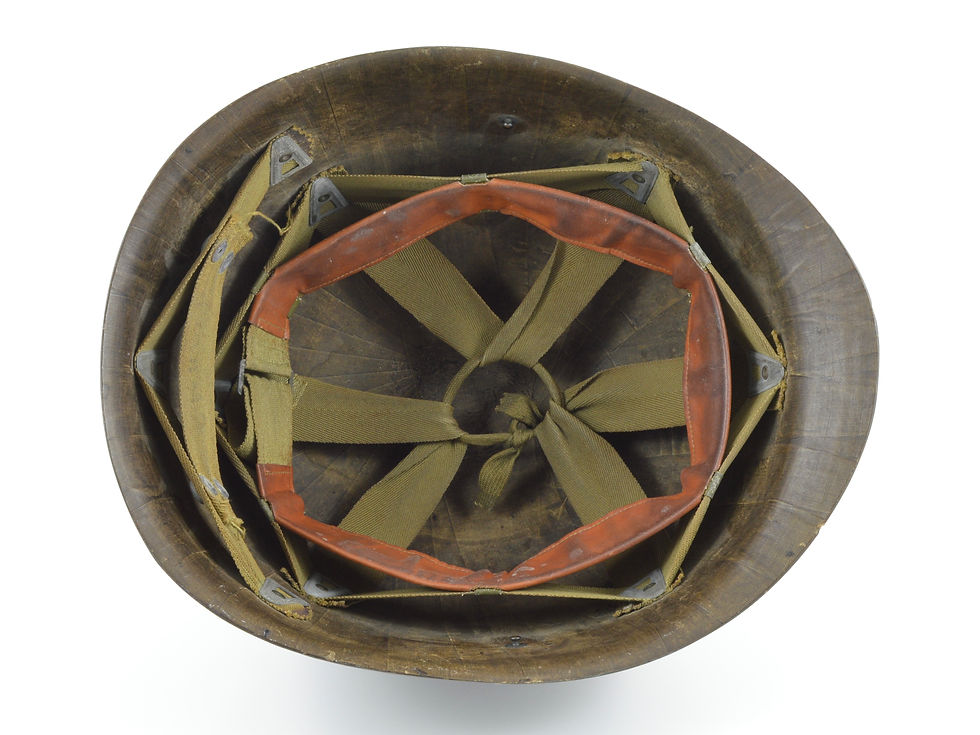WWII Painted & Camouflaged Fixed Loop M1 Helmet & IMP Liner Set
When I first acquired this helmet I reserved very little hope for the authenticity of its camouflage net and burlap scrim, but am now cautiously optimistic. View the Product Information Section, outlining my evaluation of that topic. This is an original early-WWII U.S. M1 helmet set. The McCord manufactured front seam fixed loop M1 helmet shell's heat stamp of 257A dates the helmet's production to August 1942. In addition to the camouflage, it retains its original paint, cork texture, and brass-buckled khaki chinstraps. The front of the steel shell exhibits a large, white-painted 'V', while the wearer's left side is splotched with red paint. Original wartime photos show Rangers preparing for the invasion of Anzio, Italy in January 1944 wearing V-marked helmets, however of the limited photos I have seen of such helmets, they are all marked at the rear. Because this example is marked at the front, I cannot state for certain that connection. The helmet's interior once exhibited a veteran's ID, but it was unfortunately scratched away quite some time ago. Its original owner left a fingerprint pressed into the paint that may one day be identified if enlistment records become searchable via this method. The helmet shell was recently paired with an original International Molded Plastics manufactured helmet liner. It features non-painted steel A-washers, dating the liner's production to late-1942. The khaki suspension is strong and intact. It comes outfitted with an original Scholl Mfg. Co. neckband, an A. Stein & Co. manufactured headband, and a damaged flat-lipped leather liner strap. Like the helmet and liner, all of the accessories date to 1942.
Product Information Section
Prior to this, I have only ever owned one helmet with authentic scrim in my years of collecting. Upon receiving this helmet set, I can state with relative certainty that the camouflage scrim is of original, wartime application. When the helmet is moved in the slightest, it begins to shed burlap, just as did my prior original example. Compressed between the interior of the helmet shell and the exterior of the liner is a lump of scrim that looks like it hasn't been disturbed in decades. Additionally, the net itself has a considerable amount of excess material wedged between the steel shell and the liner. Newly-cut vehicle nets, in order to maximize yield, usually have no more material than is absolutely necessary to fit over a helmet. With these promising indications, I pressed the previous owner on the helmet's history. The prior owner's mother gifted him the helmet while in Morro Bay, California in 1986 and its appearance has not changed until recently (it was previously outfitted with a Vietnam era liner that has since been swapped out for a more appropriate one manufactured by IMP).
































